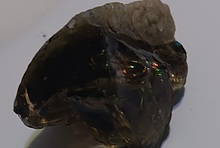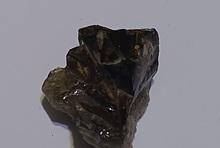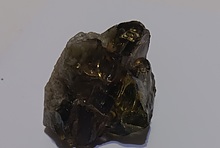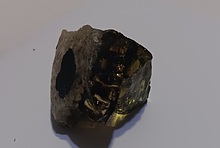Home PageAbout MindatThe Mindat ManualHistory of MindatCopyright StatusWho We AreContact UsAdvertise on Mindat
Donate to MindatCorporate SponsorshipSponsor a PageSponsored PagesMindat AdvertisersAdvertise on Mindat
Learning CenterWhat is a mineral?The most common minerals on earthInformation for EducatorsMindat ArticlesThe ElementsThe Rock H. Currier Digital LibraryGeologic Time
Minerals by PropertiesMinerals by ChemistryAdvanced Locality SearchRandom MineralRandom LocalitySearch by minIDLocalities Near MeSearch ArticlesSearch GlossaryMore Search Options
The Mindat ManualAdd a New PhotoRate PhotosLocality Edit ReportCoordinate Completion ReportAdd Glossary Item
Mining CompaniesStatisticsUsersMineral MuseumsClubs & OrganizationsMineral Shows & EventsThe Mindat DirectoryDevice SettingsThe Mineral Quiz
Photo SearchPhoto GalleriesSearch by ColorNew Photos TodayNew Photos YesterdayMembers' Photo GalleriesPast Photo of the Day GalleryPhotography
╳Discussions
💬 Home🔎 Search📅 LatestGroups
EducationOpen discussion area.Fakes & FraudsOpen discussion area.Field CollectingOpen discussion area.FossilsOpen discussion area.Gems and GemologyOpen discussion area.GeneralOpen discussion area.How to ContributeOpen discussion area.Identity HelpOpen discussion area.Improving Mindat.orgOpen discussion area.LocalitiesOpen discussion area.Lost and Stolen SpecimensOpen discussion area.MarketplaceOpen discussion area.MeteoritesOpen discussion area.Mindat ProductsOpen discussion area.Mineral ExchangesOpen discussion area.Mineral PhotographyOpen discussion area.Mineral ShowsOpen discussion area.Mineralogical ClassificationOpen discussion area.Mineralogy CourseOpen discussion area.MineralsOpen discussion area.Minerals and MuseumsOpen discussion area.PhotosOpen discussion area.Techniques for CollectorsOpen discussion area.The Rock H. Currier Digital LibraryOpen discussion area.UV MineralsOpen discussion area.Recent Images in Discussions
Techniques for CollectorsFeOtot recalculation to FeO and Fe2O3 by stoichiometry
16th Mar 2011 08:38 UTCŁukasz Kruszewski Expert
Would like to ask if you know about a "universal" method to recalculate FeOtot to FeO and Fe2O3 by stoichiometry? I know about a method of Carmichael, i.e. recalculation on ulvospinel and ilmenite basis, but it seems to be only for spinels (please correct me if I'm wrong).
Is there a formula for such recalculation for any mineral?
Best regards,
Luke
16th Mar 2011 13:24 UTCJohan Kjellman Expert
Then "calculating" FeO and Fe2O3 is done the following way:
First your mineral must have some constraining conditions, i.e. total number of oxygens or cations, etc. which you have as a formula in one of the cells.
Then in the Fe2o3 cell you put the formula
(FeO*-FeO) x 1,11138
In the FeO-cell you now assign a value and check your "constraining condition cell" and adjust until it has the right value.
cheers

16th Mar 2011 14:26 UTCAlfredo Petrov Manager
16th Mar 2011 19:18 UTCŁukasz Kruszewski Expert
16th Mar 2011 23:44 UTCRalph S Bottrill 🌟 Manager
17th Mar 2011 08:21 UTCŁukasz Kruszewski Expert
Cheers!
Luke

21st Jun 2012 16:44 UTCEgbo Akpesiri
Best regards,
Egbo

21st Jun 2012 17:16 UTCAlfredo Petrov Manager

26th Jul 2012 19:01 UTCShah Alam
31st Aug 2012 23:52 UTCRalph S Bottrill 🌟 Manager

11th Jan 2014 14:25 UTCBISHADY
THANK YOU IN ADVANCE
A.M. BISHADY
CAIRO, EGYPT

12th Jan 2014 03:54 UTCJohn Attard Expert
One then titrates with permanganate again to get the total iron.
Is that what you were looking for?
John Attard, San Diego, California.

12th Jan 2014 17:12 UTCHassan tharwat
then calculating FeOtot/MgO ratio.
i need your help please
thanks

12th Jan 2014 23:32 UTCEmil Box
the factor to calculate FeO from Fe2O3 is 0.8998
Milo

13th Jan 2014 11:25 UTCZbynek Burival Expert
The wet analysis is impossible for mixed, altered or too small minerals. You may avoid undetermined elements by using LA-ICP-MS, sometimes just this helps to get the formula. Sometimes the structure can help, eg. if you can say there is no Fe in position typical for Fe3+ - Raman and IR spectroscopy or xray diffraction help with this. The most efficient method is to use Mossbauer spectroscopy which can directly analyse and distinguish Fe2+ and Fe3+.
To get FeO to Fe2O3 just multiply FeO by 1,11111... Fe2O3 to FeO is just reverse, divide Fe2O3 by 1,11111 (or multiply by 0,899999 as said above).

21st Jan 2014 09:31 UTCMaarten VU
-------------------------------------------------------
>
> To get FeO to Fe2O3 just multiply FeO by
> 1,11111... Fe2O3 to FeO is just reverse, divide
> Fe2O3 by 1,11111 (or multiply by 0,899999 as said
> above).
What is the calculation behind this? Where does the number 1,1111 come from?
I have my XRF analysis in Fe2O3, but my modelling program only accepts FeO. So I would like to know how the 1,1111 is calculated.
21st Jan 2014 12:33 UTCJohan Kjellman Expert
cheers

14th Sep 2014 10:10 UTCDeva Ram

2nd Nov 2015 17:54 UTCMuha
Could you help me to calculate the FeO and Fe2O3 from total iron composition in the total rock, please.
Best regards

30th Oct 2017 13:42 UTCfaiza debabha
30th Oct 2017 16:04 UTCJohan Kjellman Expert
It depends on what mineral.
please specify and/or give an example of your raw data
cheers




Mindat.org is an outreach project of the Hudson Institute of Mineralogy, a 501(c)(3) not-for-profit organization.
Copyright © mindat.org and the Hudson Institute of Mineralogy 1993-2024, except where stated. Most political location boundaries are © OpenStreetMap contributors. Mindat.org relies on the contributions of thousands of members and supporters. Founded in 2000 by Jolyon Ralph.
Privacy Policy - Terms & Conditions - Contact Us / DMCA issues - Report a bug/vulnerability Current server date and time: April 19, 2024 07:18:15
Copyright © mindat.org and the Hudson Institute of Mineralogy 1993-2024, except where stated. Most political location boundaries are © OpenStreetMap contributors. Mindat.org relies on the contributions of thousands of members and supporters. Founded in 2000 by Jolyon Ralph.
Privacy Policy - Terms & Conditions - Contact Us / DMCA issues - Report a bug/vulnerability Current server date and time: April 19, 2024 07:18:15











